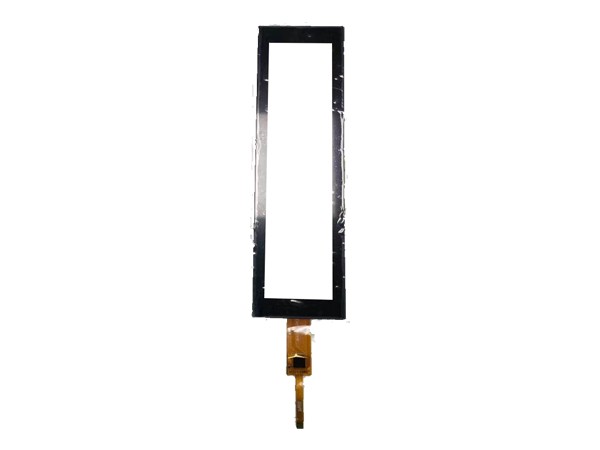The Unseen Interface: Why a Capacitive Touch Screen is Everywhere
Take a moment to think about how you interact with technology every day. From the smartphone in your pocket to the ATM at the bank, or the interactive display at your local coffee shop – chances are, you're constantly touching a Capacitive Touch Screen. This intuitive technology has revolutionized user interfaces, making devices more accessible, responsive, and seamless. At RONDELIDISPLAY, we are at the forefront of this revolution, specializing in the design and manufacturing of high-quality capacitive touch screens that empower innovation across countless industries.
How Does a Capacitive Touch Screen Work?
Unlike older resistive touchscreens that rely on pressure, a capacitive touch screen works by sensing the electrical properties of the human body. The screen is coated with a conductive material (often indium tin oxide) that creates a uniform electrostatic field. When a finger (or a conductive stylus) touches the screen, it draws a tiny amount of current from the contact point, causing a change in the electrostatic field. Sensors then detect this change and pinpoint the location of the touch. This technology allows for multi-touch gestures (like pinch-to-zoom), delivers superior optical clarity, and is highly durable.
RONDELIDISPLAY: Leading Innovation in Touch Technology
As a premier manufacturer of display solutions, RONDELIDISPLAY excels in producing a wide array of capacitive touch screens tailored for diverse applications. We offer various sizes, resolutions, and configurations, ensuring that our touch screens integrate seamlessly into everything from consumer electronics and medical devices to industrial control panels and interactive kiosks. Our commitment to precision engineering, robust materials, and advanced manufacturing processes ensures that every capacitive touch screen we produce delivers exceptional responsiveness, crystal-clear visuals, and long-term reliability. We are a trusted name for quality display technology in China.
The Ubiquitous Applications of Capacitive Touch Screens
The versatility and performance of capacitive touch screens have led to their widespread adoption in numerous sectors:-Consumer Electronics: Smartphones, tablets, laptops, and smartwatches.
-Automotive: In-car infotainment systems and navigation displays.
-Medical Devices: Diagnostic equipment, patient monitors, and surgical displays.
-Industrial Automation: Control panels, HMI (Human-Machine Interface) systems, and factory equipment.
-Retail & POS: Interactive kiosks, point-of-sale terminals, and digital signage.
-Home Appliances: Smart refrigerators, ovens, and washing machines.
-Public Information: ATMs, ticket machines, and information kiosks.
RONDELIDISPLAY's Commitment to Excellence
Our dedication at RONDELIDISPLAY extends beyond manufacturing. We work closely with our clients from concept to production, providing expert technical support and customization options to meet specific project requirements. We understand the critical role of the display in user experience, and we strive to deliver solutions that not only meet but exceed performance expectations. Our rigorous quality control processes ensure that every capacitive touch screen leaving our facility is of the highest standard.
FAQs About Capacitive Touch Screens
Q1: What are the main advantages of a capacitive touch screen over a resistive one?oA1: Capacitive touch screens offer multi-touch capability, better optical clarity, higher durability (as they are typically glass), and greater responsiveness to light touches, unlike resistive screens that require pressure.
Q2: Can I use gloves with a capacitive touch screen?**
oA2: Generally, regular gloves prevent the electrical connection needed for capacitive screens. However, special conductive touch screen gloves or specific industrial touchscreens designed for gloved operation can be used.
Q3: Are capacitive touch screens durable?
oA3: Yes, as the top layer is typically glass, capacitive touch screens are highly durable and resistant to scratches and wear, making them suitable for frequent public use.
Q4: Do capacitive touch screens work in all environments?
oA4: While robust, extreme temperatures or significant moisture can sometimes affect performance. Many industrial-grade capacitive touch screens are designed with features like enhanced waterproofing and temperature resistance for challenging environments.
Q5: What is "projected capacitive touch" (PCAP)?
oA5: PCAP is the most common type of capacitive touch screen technology. It uses a grid of electrodes to create a 3D electrostatic field, allowing for highly accurate, multi-touch input, even through a protective cover glass.
Touch the Future with RONDELIDISPLAY!
Elevate your product's user experience with the superior performance and responsiveness of a Capacitive Touch Screen from RONDELIDISPLAY. Contact us today to explore our cutting-edge display solutions and discover how we can help bring your interactive visions to life.




